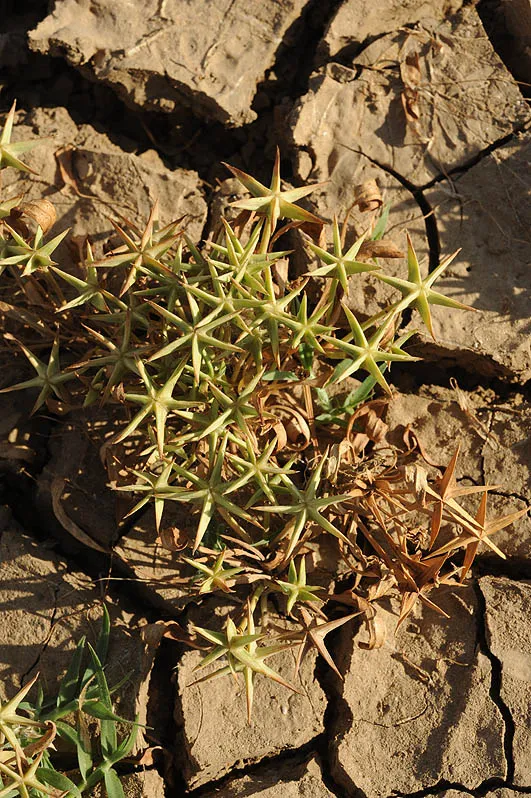Boerhavia repens
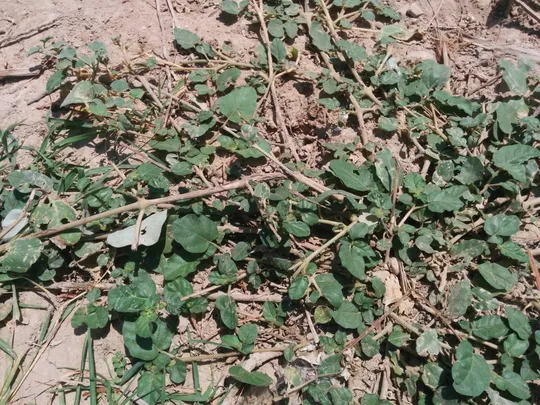
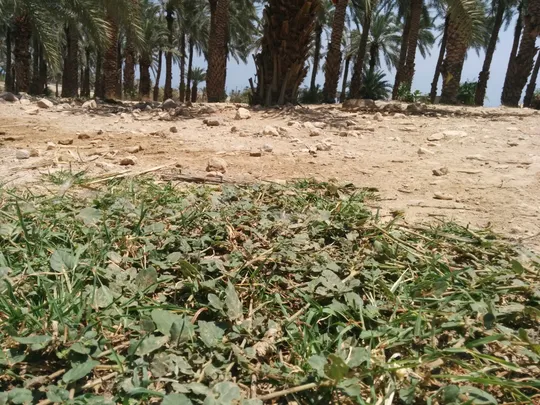
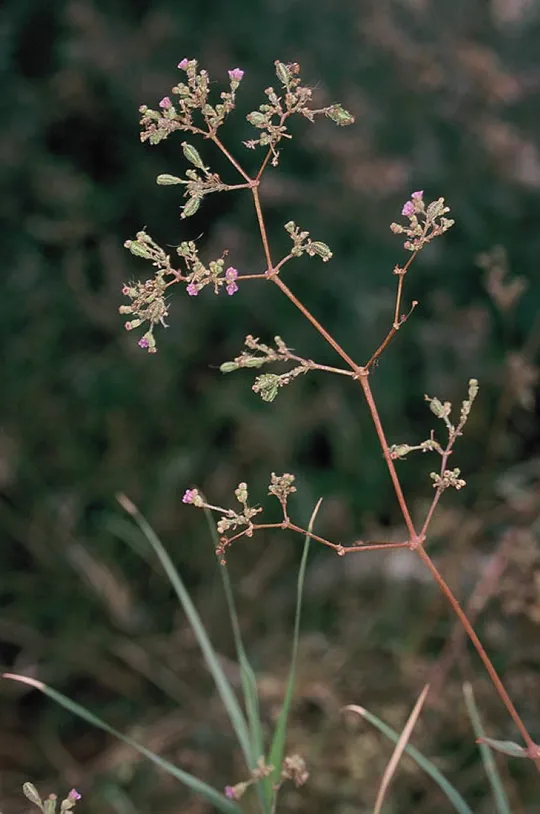
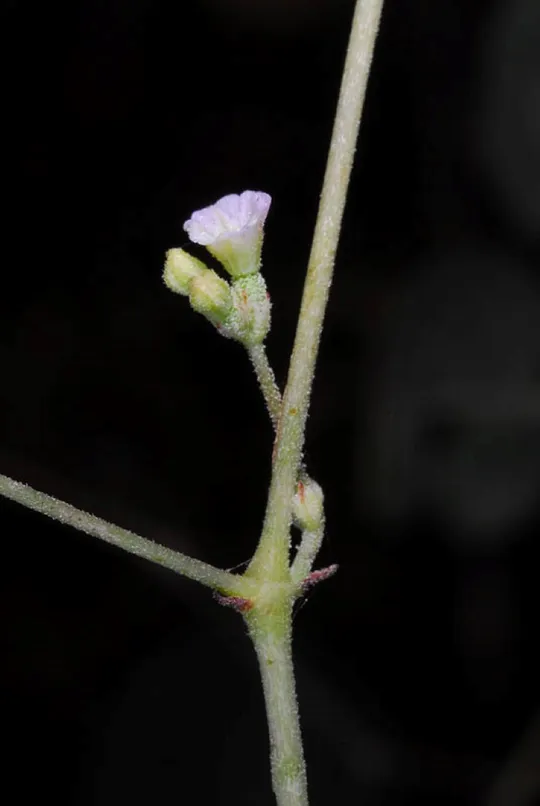
Boerhavia repens
grows in in three regions in Israel: in the Jordan Valley, the Judean Desert
and the Dead Sea, at a total of eight recorded sites, although there may be ten
sites. Most of the sites are located in the Jordan Valley, around Jericho, and
Wadi Fara and Ǧiftlik. In the Judean desert it was seen in Wadi Tmarim and in
the Dead Sea region it grows in the En Gedi date groves and in Wadi David. Ǧiftlik
is the northernmost point of its global range. Observations from more northerly
population growing on the basalt cliffs above Hamat Gader require verification.
Interestingly, the plant is completely absent from the area penetrated by Sudanian
plants in the Arava and the Elat Mountains. Such a disjunction pattern between
the main distribution area that is south of Israel (particularly in Africa) and
the Dead Sea and Jordan Valley region is also known from other Sudanian species:
Abutilon indicum, A. hirtum, Maerua crassifolia, Cordia sinensis and Periploca
aphylla. This can be explained by the fact that the environmental
conditions in the Dead Sea region are more suitable for the growth of these Sudanian
plants than the Arava and the Elat regions in which the aridity is more extreme
and the winter temperatures are often lower.
B. repens was planted at
the junction of the Qumran National Park-Kibbutz Kalya during the development of
a local garden for wild plants at this site in 1995 (Blecher).
Shaded habitats on
rocks and in the proximity of trees in the hot desert. Considered in the world
as a noxious weed in agricultural areas and gardens.
The genus Boerhavia consists of
about 40 species whose distribution is in the hot regions in the world, some of
which are weeds. Only one other species is known from our region – B.diffusa that grows in
the extreme desert in Sinai. Unlike the B. repens, the
inflorescence of this species is a capitulum and it is always decumbent. Both Boerhavia species reach their northern distribution
border in our region, which is probably the reason for their scarcity and disjunct
distribution. The genus Boerhavia is close to the genus Commicarpus that
differs from it in its flower calyx and fruit, which is not covered with
glandular hairs, but has sticky protuberances, at least on its upper part. Three
wild species of Commicarpus grow in Israel: the most common is C.
plumbagineus that has prominent white flowers, grows along the Jordan
Valley but also in disturbed habitats in the Coastal Plain; C. helenae has
a scattered distribution along the Arava and the Dead Sea, and characteristic
small pink flowers in whorls; C. sinuatus has larger pink flowers, grows
in the Arava and the Elat area and although fairly rare is not endangered. The original
characteristic life form of Commicarpus and Boerhavia is a climbing plant in the Sudanian
savanna region. In Israel it is a creeping plant that grows in extreme desert habitats in
dry river beds and rocky wadis and at the base of small cliffs, probably a
local adaptation to its secondary habitat.
Both genera
belong to the Nyctaginaceae family, which numbers about 30 genera and about 350 species
found throughout the tropical regions of the world as well as in desert areas
in North America, Arabia, eastern Africa and Australia.
This family also
includes two common garden plants in Israel: Bougainvillaea spectabilis and
Mirabilis jalapa.
·
The number of
regions in which Boerhavia repens is found seems to
be stable, but its sites were recorded only until the 1970s and the 1980s and
no records are available for the last two decades. This makes it difficult to
assess any change trends.
·
The conversion
of land to agricultural in the Jordan Valley constitutes the major threat to B. repens.
·
In the country
it is protected in the En Gedi Nature Reserve.
·
It is not globally
endangered and does not appear in other red plant lists.
Repeated field
surveys of Boerhavia repens should be conducted
to record and update its sites and population sizes, as a basis for management
policy. Acclimatization operations should be continued in the in framework of gardening
in the Jordan Valley and the Dead Sea region.
Boerhavia repens
is a widely spread species in Africa and tropical Asia, that penetrates the desert
via oases. In Sicily B. repens is a feral
species.
Boerhavia repens is a rare perennial plant of hot regions in the Jordan Valley and the
Dead Sea, which is probably affected by the spread of agriculture in Israel. In
Israel the species grows in natural habitats and not in anthropogenic habitats
as in most countries in its range, which increases the importance of preserving
the plant.
בלכר מ. 1995. גנים של צמחי בר בחבל ים-המלח: תחילת הדרך. מגילות תמר, עלון המועצות האזוריות "תמר" ו"מגילות", קיץ: 8-10.
Current Occupancy Map
| 1000 squre meter pixel | 5000 squre meter pixel | 10000 squre meter pixel | |
|---|---|---|---|
| number of observations | 0 | 0 | 0 |
| in total pixels | 0 | 0 | 0 |
| Family | Nyctaginaceae |
| Classification | On the near threatened species list |
| Ecosystem | Desert |
| Chorotype | Tropical – Sudanian (Saharo – Arab) |
| Conservation Site | Ǧiftlik |
| Rarity |
1
2
6
|
|---|---|
| Vulnerability |
0
2
4
|
| Attractiveness |
0
0
4
|
| Endemism |
0
0
4
|
| Red number |
1
2.6
10
|
| Peripherality | S |
| IUCN category | DD EW EX LC CR EN VU NT |
| Threat Definition according to the red book | Near threatened |
 Based on:
Based on:



